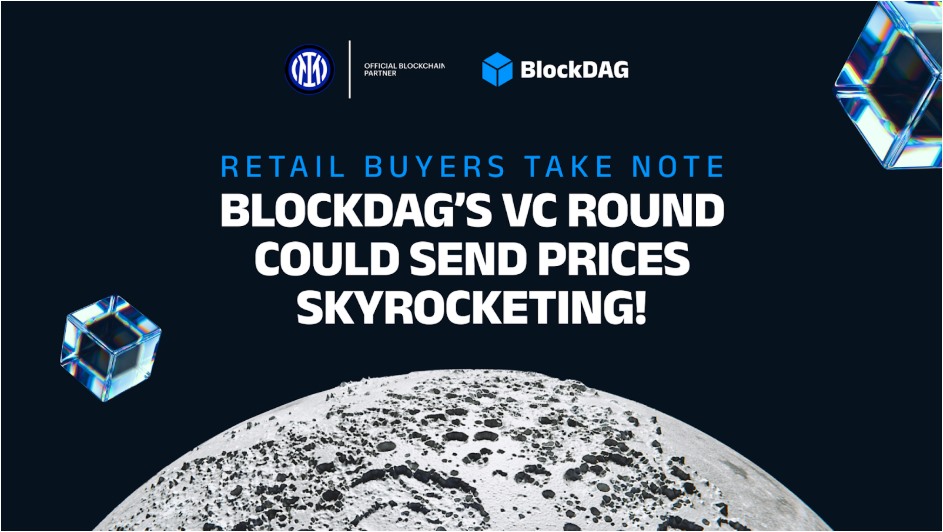Looking ahead to 2025, it’s becoming clearer that real-world use and sustained development will likely set apart the strongest crypto projects. While legacy networks like Ethereum and Solana continue to evolve, one newer name—BlockDAG—is building a presence through real tools and widespread access.

Here’s a breakdown of four projects worth watching next year, with a focus on practical use and strong market signals.
1. BlockDAG (BDAG): Mining App Drives Early Growth and Mass Appeal
BlockDAG is building momentum by offering something simple and scalable—a way to mine directly from a smartphone. The project’s X1 beta app, available on Android and iOS, has already attracted over 1 million users. It allows people to earn rewards daily by interacting with the app, using a simple interface designed to encourage regular engagement.
This approach has opened up crypto access to a wider audience. No special hardware is needed. No prior experience required. That onboarding flexibility has helped fuel strong interest in the project’s presale, which has already pulled in $216 million in funding and sold more than 19.3 billion tokens.
Currently, batch 27 is live with a price of $0.0248, and those who joined in earlier rounds have seen returns as high as 2,380%. Beyond the mobile mining rollout, BlockDAG is targeting over 1,000 dApps in the next year, which could further strengthen its position as a user-first blockchain.
Rather than offering a concept, BlockDAG is putting tools into people’s hands and laying out a clear plan for expansion. For those looking for more than theoretical models, this project may represent one of the more active plays heading into 2025.
2. Ethereum (ETH): Scaling Up Through Layer 2 and Staking
Ethereum continues to hold a key place in the market through its role in smart contracts and decentralized finance. Since switching to a Proof-of-Stake system, ETH has shifted focus toward yield-based utility, with platforms like Lido and Rocket Pool offering staking rewards and long-term engagement.
To address network traffic, Layer 2 chains such as Optimism and Arbitrum are helping Ethereum improve processing speed and reduce costs. These upgrades allow more users to build and interact with apps on the platform without waiting for high-throughput solutions.
Ethereum also remains a leader in total value locked (TVL) and has growing interest from institutions that see long-term use in decentralized applications. While Ethereum may not offer the explosive returns of newer tokens, its strong developer base and active upgrade cycle make it a reliable option for those planning to hold over time.
3. Binance Coin (BNB): Utility-Driven Growth From Exchange and Beyond
BNB benefits from its direct connection to Binance, one of the most active exchanges in the market. Although it started as a token for trading fee discounts, BNB has grown to power transactions across Binance Smart Chain, supporting a wide range of decentralized applications.
Despite challenges facing centralized exchanges, Binance continues to see high usage, keeping demand for BNB strong. The token is also used in staking, liquidity pools, and periodic burns that reduce supply—factors that support its long-term sustainability.

As long as Binance remains active in launching tools, tokens, and services, BNB is likely to keep its position as a reliable utility token with ongoing demand.
4. Solana (SOL): Performance Strength and Active Development Keep Interest High
Solana’s ability to handle high transaction volumes with minimal fees has helped it remain relevant, particularly for developers working on NFT platforms, real-time apps, and GameFi tools. The network regularly processes thousands of transactions per second, offering speed that few other chains can match.
Developer activity has picked up, along with increases in DeFi participation and stablecoin usage. These indicators suggest growing trust in the platform’s direction. Projects like Helium and Star Atlas continue to use Solana for more than trading, bringing utility in payments, data, and gaming environments.

Solana’s strength lies in its ability to attract builders and users without pricing them out. That combination of affordability and speed helps explain why it still appeals to those seeking rapid execution in blockchain environments.
Looking Ahead: Which Project Aligns with Real Growth?
As blockchain projects move into the next phase of growth, the focus is shifting away from abstract narratives and toward actual product rollouts, user bases, and long-term plans. Ethereum keeps evolving with upgrades and scaling tools. Binance Coin maintains value through ecosystem utility. Solana appeals to developers through fast and affordable tools.
But BlockDAG is presenting a new approach—giving people access through a mobile app and aiming to grow through real-world participation. Its early traction, strong fundraising, and live mining functionality are giving users more than just promises. It’s offering a way to engage now, not later.
For those evaluating crypto based on usefulness, expansion plans, and early adoption, BlockDAG may deserve a closer look as 2025 approaches.
Disclaimer: The statements, views and opinions expressed in this article are solely those of the content provider and do not necessarily represent those of Crypto Reporter. Crypto Reporter is not responsible for the trustworthiness, quality, accuracy of any materials in this article. This article is provided for educational purposes only. Crypto Reporter is not responsible, directly or indirectly, for any damage or loss caused or alleged to be caused by or in connection with the use of or reliance on any content, goods or services mentioned in this article. Do your research and invest at your own risk.

